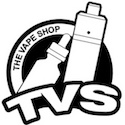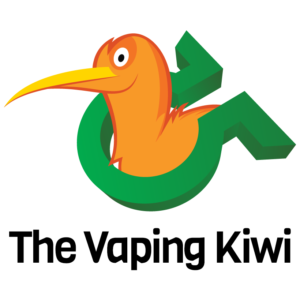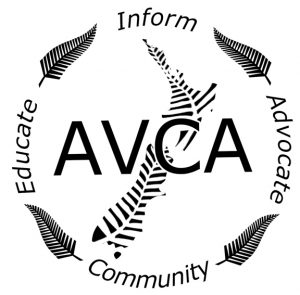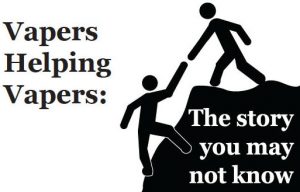 AVCA is truly a grassroots organization and our success depends completely on community involvement and support. If you currently use smokeless alternatives to combustible tobacco, our goal is to ensure that these reduced harm alternatives become and remain available, affordable and effective.
AVCA is truly a grassroots organization and our success depends completely on community involvement and support. If you currently use smokeless alternatives to combustible tobacco, our goal is to ensure that these reduced harm alternatives become and remain available, affordable and effective.
Funding is utilised solely for the running of the charity, there are no salaries paid (all board members are volunteers) so all the money donated goes back into the community via our advocacy and outreach programs in the community.
Please consider making a one-time donation or set up an automatic monthly donation to help us help you.
AVCA is a charitable trust board meaning we are a non-profit organization. Contributions to AVCA can be receipted (upon request) for tax purposes.
]]>
Yes vapers too, are now ostracised also to the back alleys to reunite with the very addiction they had spent many a year trying to dissociate from? It begs the question why the act of vaping has instilled so much negative press when recently released ministry of health reports have clearly stipulated that vaping has the contributive potential to assist in making New Zealand smoke free by 2025? http://bit.ly/2jHuoOS
Do vapers concede to the fact that Invercargill councillors made the right decision in maintaining the right for the public to breathe in their fresh southern air with no expense added by the smoker’s second-hand fumes wafting their way?
Well yes and no… It appears councillors may have reacted with too much spontaneity and without forethought when considering vaping in mind, it is, therefore, disingenuous to say that the city council want a smoke-free city while ignoring any attempts to find alternatives to smoking?? Or in this case alternative “designated vaping area’s” other than an alleyway which clearly depicts their mentality of an ‘out of sight out of mind’ attitude.
Not only in Invercargill has the smoke-free message been clearly implemented, so too are other provincial cities such as Rotorua and Whanganui, http://bit.ly/2g88sPx where vaping is banned, not by law but by policy, in which these policies must be adhered to or otherwise told “nicely” by concerned public to move along, even though defined by law that vaping in smoke-free places is not prohibited by the Smoke-free Environments Act 1990, but can be manipulated to suit by council policymakers regardless.
It should be noted that the majority of smoke free policies have been welcomed accordingly by the vaping community as a means to not be reintroduced or influenced back into an addiction they had worked tirelessly to escape from, however merging vaping into the same basket as smoking because of a group of misinformed councilors who feel the need to negate scientifically proven data around the efficacy of vaping, or have collated spurious ramblings from the astroturfing pseudoscientists who choose to believe there is no place for vaping in society, just does not sit right with vapers at all!
If this becomes a problem when disseminating between what evidence is rot and what is robust, then this only leads to a state of more confusion around differentiating between the two of smoking vs vaping with the public… and obviously most of the council!
Another scenario to consider is our children and youth who apparently when faced with vaping, see this as a gateway and a means to renormalising smoking behaviour’s, but of course this hypothesis has been debunked that many times it’s not funny, but obviously it needs reiterating with local councilors but I hardly doubt they’d listen to a word! as the whole contentious debate on vaping has been widely fought by all in sundry by every anti-vaping organisation out there, due to the ‘kids’ needing to be protected from the iniquitous actions of a vaper!
I do however see some valid points that are raised as noted in last year’s reports by Otago University http://bit.ly/2dzHT2G and a contrasting response from Auckland’s Massey University http://bit.ly/2zv8ybP … but there are certain issues that need further addressing once more robust data emerges, so I’ll just contend with waiting upon the veracity of reliable science and SENSIBLE restrictive legislation on dealing with that sensitive topic.
AVCA find it very frustrating when trying to validate vaping to the public arena (and some SSS cohorts), that the beneficence from transitioning from tobacco harm helps necessitate smokers towards a smoke free lifestyle, and if making that decision to change for the best to further improve one’s health, then being told to vape out of sight and out of mind sends a pretty dismal message on incentivising vaping?
PH has already made it quite clear that smoking-related diseases are a burden on the public health system as too is obesity and sugar, but no disrespect to people of the fuller figure as it is their prerogative if they choose to eat a fatty diet, just as smokers opt to indulge in a cigarette, and if a smoker wants to quit they can select between the NRT options or vape therapy, such as with an obese person who wants to diet, there are a multitude of gyms and dietary plans to follow.
But as for being a vaper, we seem to be in our own little niche with very little service input from health providers other than ourselves in providing a supportive hand, furthermore AVCA believes it’s vitally important that all DHBs, NGOs, GPs, TC, PH & SSS send a clear message to the public that there’s room for utilising vaping in the community and that everyone across the board realises that harm reduction goes far beyond the old paradigm of “quit or die” and that vaping is yet another integral solution via an Electronic Liquid Vapourisers System (ELVS) that can be a deterrent against tobacco use and tobacco related harm and should be seen as that by public, and not perceived as a product of harm towards non-users, passerby’s and children.
… However, so to the smokers in Invercargill that have recently found liberation from the domination of combustibles… you are rewarded with the pleasure of knowing you can revisit once again the smokers in the alleyways and back streets of your great city! Which makes me wonder if it is truly about that person’s health or not? therefore smokers & vapers can expect anytime soon to be joined by the bariatric public who have been told to consume their burgers down the alleyway (food for thought), whilst alcoholics roam freely inebriated across the city inflicting pain on themselves, property and others… but it is great to see towns like Rotorua, Whanganui and Invercargill have councillors and mayors that we can rely upon to have their priorities straight.
Elsewhere in New Zealand though, Auckland City Council has proven to be quite accommodating in supporting vapers on not banning them from a necessity that keeps them from the clutches of the cancer sticks, and just as well vapers weren’t relegated to Auckland’s myriad of back alleys, as that would have proven to be a very unwise and unsafe choice by ACC.
Recently, Maori public health group Hapai Te Hauora a National Tobacco Control Advocacy Service (the only PH group presently that’s vape empathic) spearheaded a campaign against Auckland City Council in having them acknowledge that vaping was needed to be excluded from their smoke-free policy… the council then moved forward in stopping smoking in public places, but had allowed vaping to be excluded from that policy.
This would have been interesting to see the consequences of that notion, which inserting the policy would have otherwise proven to be a waste of time and resources in enforcing such a decision around a vaping bylaw in a major city such as Auckland.
But as succinctly stated by Hapai, “not to victimise and not to punish” so I really hope Hapai can persuade other local councils around New Zealand also in adopting this mantra if they too were ever thinking of making vaping inclusive in their future smoke-free policies, http://bit.ly/2x3FcNk
]]>
AVCA APPROVED VENDOR – RESELLER PROGRAM
What is the AVCA Approved Vendor Program?
The AVCA Approved Vendor Program for Resellers is a process by which consumers of vaping products in New Zealand can be guaranteed that the vendors in the program agree to conform to the guidelines set out in the AVCA Approved Vendors – Resellers– Memorandum of Understanding.
How does it work?
The NZ Vendors below guarantee that the products that they sell are of the highest quality, both equipment and e-liquid, and agree to fully support both the items they sell and the consumers who purchase them. All the vendors have been in business, legitimately, for one year at minimum in order to be eligible for the program.
The following Vendors are already signed on to the program:
If you would like more information, you can email one of us: Steve or Nancy.
]]>What is it?
This resource location or “vape cooperative” is a one stop shop for harm reduction – specifically tobacco harm reduction. Individuals can access information, guidance, and equipment to make the switch from combustible tobacco smoking to vaping. It is run by an AVCA VIF Mentor/Advocate who volunteers their time and knowledge to educate and support smokers and other interested community members, about all things ‘vape’ related.
“Cooperative” has a dual meaning – the first is that it is a community operated and supported resource, community being not just AVCA mentors but also and health care professionals and community advocates; the second being vendor cooperative – the VC sets up the individual at the start of their journey from tobacco to vape, AVCA supports the individual through mentoring with a dedicated advocate/vape buddy and then, after 8 weeks of mentoring, the individual is then referred to vendors for the continuation of their journey.
Where is it (are they) located?
This is a resource location located in smaller towns and regions that are not easily/directly served by a vape vendor. “Not served” means that it is at least one hour from the closest Brick and Mortar Vape Shop.
The pilot program for an actual physical location is in Masterton, Wairarapa. This location was chosen because a) Wairarapa has one of the highest Maori smoking rates in the lower North Island and b) there are quite a few AVCA members that live and work in the Wairarapa community and have networks within the wider area.
Why are they necessary?
There has been a need to provide better access to vaping equipment and supplies in the provinces and rural areas. Part of this is driven by the fact that in these particular areas, there are higher combustible tobacco smoking rates, especially among youth and Maori. Concurrently, in these areas there is also a cohort of individuals with additional socioeconomic barriers such as income and health issues that prevents them from full access to the online vaping community.
With the current Smoking Cessation Provider mandate by MoH, and the agency/agencies that administer the program for MoH – the KPIs for the smoking cessation providers is to keep track of referrals, offer advice, support and MoH funded NRT and medications for one calendar month and once a “client” is one month smoke free, they can be listed as a “success” in the system.
The problem with this process is that most smokers who relapse, do so between the first and second months of cessation. The smoking cessation providers do not have the funding to provide any continuity of care beyond the one month funded time frame that they are given. Many are lost in the cracks and become repeat “clients” of the providers who are then penalised for these “repeat clients” in their stats and audits as not being “successful” in their mandate. This is not the fault of the cessation providers, but the flaw in the system as it is currently setup and funded by the Ministry of Health. We fully support the smoking cessation providers, contractors, nurses who have the same mission that we do – get people off combustible tobacco, for good!
How does it work?
In the Wairarapa pilot program, a vape cooperative was set up by an individual AVCA mentor advocate, with an initial investment of $500. This money was used to purchase authentic starter kits and e-liquid to distribute to referrals from the AVCA VIF program/Community outreach advocates for cost plus shipping.
Within the first two months, the program was self sustaining. The kits were sold to the new vapers, either directly or via a layby program and once the new vapers had completed 8 weeks of mentoring and advice, they were then referred onwards to the VTANZ vendors and the online communities (Facebook) for additional support.
The first month, 25 individuals bought kits and were signed onto the AVCA VIF program. The second month that number doubled, and the numbers have remained steady at 5 new vapers per week that come in either via community referral. All the monies that are received through the sales of kit are put back into the program, as part of the non-profit requirement of AVCA being a charity.
We hope to expand this pilot program to other locations in the future, after an assessment process that will take place in April 2017.
Areas for consideration of a Vape Cooperative are: Timaru, Gisborne, Northland and Central Otago. Determination will be made as needs are assessed and as funds permit.
Key Performance Indicator (KPI’s)
The key to the success of the program is the support mechanism provided through the AVCA VIF program. Mentor/Advocates are teamed with new vapers who have access to a vape buddy to help them with any issues that may arise with their equipment, as well as a resource of someone who has “been there, done that” and understands the struggle of beating combustible tobacco.
With the AVCA VIF program, the KPI is based on success with vaping after the initial 8 week mentoring process as well as three and six month follow ups with former new vapers. As of December 2016, the success rate of the VIF program nationwide in total has been 95% since its inception in April 2016.
Our main KPI is to assess the one year success rate once we reach April 2017. It is at that time we will assess expansion into other areas outside of Masterton.
]]>
 Included here are links to download documentation that you are free to use to either educate yourself or others about vaping; and/or when assisting smokers to switch to vaping.
Included here are links to download documentation that you are free to use to either educate yourself or others about vaping; and/or when assisting smokers to switch to vaping.
They do have a Creative Commons Licence, therefore if you do use them, you will need to reference that you received them from AVCA – Aotearoa Vapers Community Advocacy. (if via web, just linkback to us at the following: www.avca.org.nz/avcaresouces/publications)
We share these in the hopes that they can be useful to you in your work. Check back every so often as we hope to add to this library with slide presentations and other relevant information that you can use. If there is anything you would like to see that is not currently here, please contact either [email protected] or [email protected] and let us know.
Thank you for your support!
THE PUBLICATIONS PAGE IS BEING UPDATED….THANK YOU FOR YOUR PATIENCE AS WE WORK ON THIS.
]]>
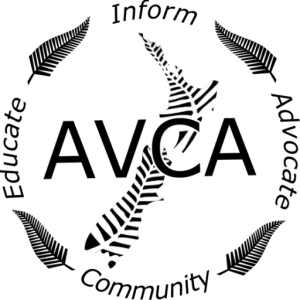 Some may be wondering why a Vapers Advocacy Group would be making a submission on the Drug Utensils Policy in New Zealand.
Some may be wondering why a Vapers Advocacy Group would be making a submission on the Drug Utensils Policy in New Zealand.
It’s very simple really…we made our submission to make it very clear to government that the equipment we use to vape are not drug utensils. Some of the original documentation that was presented with the call for submissions did not differentiate between the equipment WE use and the equipment used with cannabis, meth “P”, and other illicit drugs.
For your review: Drug Utensils Submission
]]> At the beginning of August, Steve and I were invited down to Wellington to speak about AVCA, present copies of AVCA Policies and Procedures and answer questions as presented to us with regards to electronic cigarettes, nicotine e-liquid and ENDS use.
At the beginning of August, Steve and I were invited down to Wellington to speak about AVCA, present copies of AVCA Policies and Procedures and answer questions as presented to us with regards to electronic cigarettes, nicotine e-liquid and ENDS use.
We were told that we were invited because of the work in our Vape It Forward Program, as well as a recommendation that came from the community to the minister that we were community advocates, helping to educate not just individuals but also smoking cessation providers in the area and were “onto it” when it came to explaining what vaping was and how we are involved in our local communities.
The minister was impressed that we were not affiliated with the industry and as an all volunteer organisation that has no vested financial interest in vaping. The minister was impressed that we were willing to share our information, knowledge and assist in collaborating in the legalisation process for no other reason than we feel it is the the right thing to do, and that knowledge, information and experience is to be shared for the benefit of the whole community.
Below, please find a copy of the document that we were asked to create to submit to MP Coleman and the Health Committee as it relates to the “big three” concerns that are/were held at the time of our meeting; Nicotine toxicity/carcinogenicity; youth gateway effect and second hand vape exposure.
INTRODUCTION:
The policy document states the objectives that the Ministry of Health hopes that the submission phase of the process towards legalising nicotine containing e-liquid will help to clarify. The main emphasis is how there may be reduction from harm from tobacco smoking through the use of nicotine containing e-cigarettes (ENDS).
From perusal of the policy document and a consultation with a minister in Wellington, the “big three” concerns held by the Ministry of Health were outlined as: the toxicity of nicotine, the effect of the use of ENDS on youth smoking and exposure – aka “The Gateway Effect” and the effects of ENDS on others.
BACKGROUND:
In order to review the science that is available, one must first understand about science and scientific method and then be aware of the source of the funding of the scientific research.
With regards to science and scientific method, I am going to make three presumptions: the first that it is common knowledge that Science is “a systematic and logical approach to discovering how things in the universe work. It is also the body of knowledge accumulated through the discoveries about all the things in the universe.”; the second we know the word “science” is derived from the Latin word scientia, which is knowledge based on demonstrable and reproducible data and, lastly that the scientific method is utilised to “collect measurable, empirical evidence in an experiment related to a hypothesis (often in the form of an if/then statement), the results aiming to support or contradict a theory.” (1)
The scientific method:
- Make an observation or observations; ask questions about the observations and gather information;
- Form a hypothesis — a tentative description of what’s been observed, and make predictions based on that hypothesis;
- Test the hypothesis and predictions in an experiment that can be reproduced;
- Analyze the data and draw conclusions; accept or reject the hypothesis or modify the hypothesis if necessary;
- Reproduce the experiment until there are no discrepancies between observations and theory.
It is of paramount importance to keep the concept of “good science” in mind when deciding which studies are best for evidence to address the concerns that are presented by the Ministry of Health in the policy surrounding nicotine e-liquid and nicotine containing ENDS. A review of the policy document leads us to believe that this particular document has taken some of its guidance from the FDA Deeming regulations and the TPD from the EU.
How and why Research is Funded in the US & EU – The simple version:
Most of the “first tier” medical research projects and longitudinal studies that are funded in the United States come through the National Institutes of Health and their various subsections (NCI, NIDDK, NIMH, etc. – for the specific area of the human body that the research relates to) and are funded by their priority on the federal register and public health concerns (Put simply, diabetes research will be funded to prevent diabetes – some projects may focus on obesity and endocrinology, some diabetes research will focus on obesity and dietary factors, some diabetes research will focus on genetic factors & causes.) . The projects are given priority according to federal public health priorities but the funding itself comes from the health budget targets, private donations/foundations and taxes on “public health harms” such as those excises on tobacco, alcohol and “sugar tax” on food products.
“Second tier” funding comes from the “charities” that receive funding from their sponsors (American Cancer Society, American Lung Association, etc.) who have a specific bias towards preventing the diseases that they are affiliated with. Funding comes from donations from the public as well as donations from private corporations (including tobacco and pharmaceutical companies as “alms” for the harms their products can cause in the former case, and for the discovery of new products that may perhaps benefit to their profit margins in the latter case should a marketable discovery be made.)
“Third tier” funding is that which is funded through private foundations setup for philanthropic causes that are near and dear to the founders of said foundation.
None of the foregoing is an indictment on the researchers who apply for funding, but they do know which way to go (1st,2nd,3rd tier) and which organisation to apply to for the best chance of funding. (Most new researchers start with 3rd and work their way up to 1st). They also know how to present their hypothesis & methods to suit the particular funders requirements. Some of those requirements are in “black and white” and others are more “between the lines.” In academic research, as I am sure Dr. Coleman knows, it truly is a matter of “publish or perish”, so funding is a priority.
Where research Happens in the United States & EU:
Most research happens in the bigger Universities – both public and private. Some also occurs in the bigger privately funded “think tanks” and “foundations.” Researchers at these institutions are usually hired because they fit the “research game plan” for the particular institution and then need to keep in mind the mission statement and goals of the particular institution they work for. As well, those mission statements and goals need to be in line with the local prevailing public health goals and focus that the Dean of Medicine chooses for the research. Again, keeping in mind the “publish or perish” scenario, the “sexy science focii” are those topical areas of interest within the parameters set by the people who run the medical school/research facilities.
- Negative Bias in Research as it relates specifically to Electronic Cigarettes:
Assessing all the foregoing, it is easy to see that any scientific research coming out of the United States is going to be institutionally biased towards the tobacco and pharmaceutical industries. Electronic cigarettes/ENDS are a “disruptive technology” as they disrupt the status quo and the processes by which revenue and profits are generated and therefore, are a threat to that same status quo. Hence the most effected concerns see ENDS as a threat. Part of the reason is the revenue and profits that are generated from the products produced by the tobacco and pharmaceutical industries that contribute to the federal and local economies in the United States. As more people switch to vaping from combustible tobacco smoking, there is a major loss of revenue to government tax bases and lack of funding towards those projects that require that money to continue. As far as the pharmaceutical industry is concerned, they too are losing profits as more people switch to vaping in lieu of their products for smoking cessation – patches, gum, lozenges and medicinal compounds such as Zyban, Champix, etc. It is believed that the foregoing were the reasons for the push by the FDA to initiate and implement the Deeming Regulations regarding ENDS – to protect tax revenue and corporate profits, NOT in the interests of public health, referencing biased science to prove their case.
In Europe, as it relates to the TPD, it is a well known fact that there were representatives on the committee that devised and implemented those regulations – specifically Pfizer Glaxo Smith Kline (GSK) and they had major influence on the proceedings as can be seen here.
Finishing with the reality that there are ethical issues within the scientific community as well – some associated with the “publish or perish” mantra and others associated with undue influence from funding sources/sponsor. In one study done overseas that reviewed and surveys researchers globally, one in seven scientists said that they are aware of colleagues having seriously breached acceptable conduct by inventing results. And around 46 per cent say that they have observed fellow scientists engage in “questionable practices”, such as presenting data selectively or changing the conclusions of a study in response to pressure from a funding source. Interestingly, misconduct was far more frequently admitted by medical or pharmacological researchers than others, supporting fears that the field of medical research is being biased by commercial interests. (2)
Summarised: Research on ENDS that comes from the United States and the EU, especially from the former – needs to be approached cautiously for its veracity and its ethical underpinnings. This is not to say that research should not be considered from the United States particularly, but that research from there may be unduly influenced by commercial interests and profits – the protection thereof, as well as professional investment (scientists, some not all) and government revenue (protection of same) are the driving force behind much of the “science” as it relates to ENDS. There are quite a few researchers in both the United States (Michael Siegel, PhD from Boston University) and the EU (Konstantinos Farsolinos, MD and his team at the Onassis Research institute in Athens) that not only conduct their own research, but review the research from around the world for its validity based on scientific method, ethical standards and process of funding.
NEW ZEALAND MINISTRY OF HEALTH CONCERNS – The Big Three
DISCUSSION:
Nicotine – carcinogenicity, toxicity and harms: Nicotine is a widely used addictive substance, which has a psychoactive effect and can be lethal in large quantities. On the other hand, the long-term use of small quantities of nicotine in approved nicotine replacement therapy (NRT) products (such as gum, patches or lozenges) is considered to be safe.
The reference utilised by MoH to the justify above statement comes from a journal article that was a review of previous scientific articles with an emphasis on, as is in the title “dubious self-experiments in the nineteenth century.” Accordingly, In the policy document, MoH references that “The medium lethal dose is estimated to range between 6.5 and 13 mg/kg.” (6). Current science disproves these figures and results, as discussed below.
Nicotine is no more addictive than that of the caffeine contained in coffee and tea. (9). Although nicotine is the main psychoactive agent in tobacco, it has relatively minor health effects – It is not a carcinogen, does not cause respiratory disease and has only minor cardiovascular effects. (3) Also, the nicotine used in ENDS, while it may contain small amounts of other chemicals including volatile organic compounds, carbonyls, aldehydes, tobacco-specific nitrosamines (TSNAs) and metal particles, research indicates that they are present at much lower levels than in cigarette smoke. (4) In normal conditions of use, toxin levels in inhaled ENDS aerosol are below prescribed threshold limit values for occupational exposure, in which case significant long-term harm is unlikely. (5)
Lethal overdose of nicotine is rare as nicotine itself is an emetic and any ingestion of liquid nicotine diluent, such as that used for ENDS would result in vomiting. (7,8,9). This also coincides with the issues the ministry holds regarding “dual use” of ENDS with combustible tobacco, that it may cause harm does not take into account the concept of “reduced harm” There is no evidence of increased nicotine intake from dual use. Smokers regulate their smoking behaviour in order to maintain the blood concentrations of nicotine within a comfortable range. If those levels get too high, symptoms of nicotine toxicity – such as nausea, headache and dizziness can occur and smoking is then reduced. A recent study found that smokers using ENDS maintain their intake of nicotine, but reduce their smoke and toxin intake, which results in an overall health benefit, therefore reducing harm through reducing exposure to the toxicants in combustible tobacco (10). It is extremely difficult for someone to have a fatal overdose of nicotine through either ENDS use or through ingesting nicotine containing e-liquid due to nicotine’s inherent emetic qualities.
Promotion to young people: Overseas evidence shows that promotion of e-cigarettes targeting young people through flavours, packaging may appeal to young people. Local evidence that there is an increase in New Zealand youth trying e-cigarettes from studies in 2014 that DID NOT NOTE whether said use was with nicotine containing e-liquid or non-nicotine e-liquid.
The main issue with youth is harm reduction. One cannot, in an unequivocal manner state that they can prevent youth from uptake or experimentation with any harmful substance of behaviour with 100% guarantee. “Common Liability”, as discussed by Bell and Keane, as it relates to the “gateway theory” defines this as the association between youth who are more risk takers and attracted to experimentation and more likely to try anything that seems to be “taboo” be it ENDS, alcohol, drugs, etc. (11).
With regards to the uptake of “vaping” in previously non-smoking youth, the available evidence does not support the “gateway hypothesis” that ENDS encourages nicotine addiction or uptake by youth. In the UK, daily ENDS use in youth is almost exclusively confined to those who already use combustible tobacco daily and regularly. Less than .2% of youth who have never smoked combustible tobacco have taken up vaping and there is no evidence of progression to smoking in this cohort. (12,13)
Keeping this in mind, as far as harm reduction and youth: nicotine dependence in youth develops rapidly and over 50% of those youth who smoke daily are already nicotine dependent. Young people who are already smoking can reduce their harm by switching to ENDS by 95%, as was shown in the Public Health UK Report.
Impact of vaping on others: “vaping clouds may be a nuisance to others, especially in enclosed spaces” and “could have negative health impacts.”
With regards to second hand exposure concerns, the ministry needs to look again at the Public Health UK report that they referenced in their policy document. Contained therein is a review that passive exposure to vapour have generally concluded that the risk to bystanders is very small and that Public Health England found that “ENDS release negligible levels of nicotine into ambient air with no health risks to bystanders.”(14,15)
As far as the argument that “vaping clouds could be a nuisance to others especially in enclosed spaces”, unless the government also wishes to regulate the use of body sprays, perfumes, and deodorants which are also a nuisance – and can be a health hazard to those who have respiratory difficulties and disease (unlike second hand vapour which has NO health harms associated with it (15,16) therefore this argument is not valid.
CONCLUSION:
his document we have covered the process of ENDS research as it is conducted in the United States and in Europe, outlining the questions that need to be asked of any science on this topic due to the insidious influence of both tobacco and pharmaceutical concerns on the subject. In the environment of academic research, there still exists the “publish or perish” mentality which means that at times, researchers must approach their hypotheses and research methods to coincide with the funding providers point of view and/or their institutions mission statements and funding sources. This is a reality at all research institutions worldwide, regardless of the topic.
When looking at the research and information on ENDS from a Public Health perspective, one needs to weigh the same five criteria that the Ministry utilised in their Drug Utensils policy document: Harm Prevention, Harm Reduction, Proportionality, Ease of Implementation and Cost Effectiveness. It is in the spirit of this point of view that we at AVCA have addressed the foregoing and will be utilising in our submission on Nicotine E Liquid and ENDS products submission that we will make in September in response to the Ministry.
Thank you for the opportunity to provide you with this information and should you require more in depth information or explanation, please do not hesitate to contact us as we wish to work with the Ministry on this process.
REFERENCES/BIBLIOGRAPHY:
- Bradford, A. (2015, March 30). Science & the Scientific Method: A Definition. Retrieved August 08, 2016, from http://www.livescience.com/20896-science-scientific-method.html
- Fanelli, D. (2009, May 29). How Many Scientists Fabricate and Falsify Research? A Systematic Review and Meta-Analysis of Survey Data. Retrieved August 08, 2016, from http://journals.plos.org/plosone/article?id=10.1371/journal.pone.0005738
- Bell K, Keane H. All gates lead to smoking: the ‘gateway theory’, e-cigarettes and the remaking of nicotine. Soc Sci Med. 2014;119:45-52.
- Zwar N, Bell J, Peters M, Christie M, Mendelsohn C. Nicotine and nicotine replacement therapy – the facts. Australian Pharmacist. 2006;25(12):969-73
- Goniewicz ML, Knysak J, Gawron M et al. Levels of selected carcinogens and toxicants in vapour from electronic cigarettes. Tob Control. 2014;23(2):133-9
- Burstyn I. Peering through the mist: systematic review of what the chemistry of contaminants in electronic cigarettes tells us about health risks. BMC Public Health. 2014;14(1):18
- Mayer B. How much nicotine kills a human? Tracing back the generally accepted lethal dose to dubious self-experiments in the nineteenth century. Arch Toxicol. 2014;88(1):5-7
- Christensen L. Three cases of attempted suicide by ingestion of nicotine liquid used in e-cigarettes. Clinical Toxicology. 2013;51:290
- Schipper EM, de Graaff LC, Koch BC et al. A new challenge: suicide attempt using nicotine fillings for electronic cigarettes. Br J Clin Pharmacol. 2014;78(6):1469-71
- Misra, M., Leverette, R., Cooper, B., Bennett, M., & Brown, S. (2014). Comparative In Vitro Toxicity Profile of Electronic and Tobacco Cigarettes, Smokeless Tobacco and Nicotine Replacement Therapy Products: E-Liquids, Extracts and Collected Aerosols. International Journal of Environmental Research and Public Health IJERPH,11(11), 11325-11347. doi:10.3390/ijerph111111325
- McRobbie H, Phillips A, Goniewicz ML et al. Effects of Switching to Electronic Cigarettes with and without Concurrent Smoking on Exposure to Nicotine, Carbon Monoxide, and Acrolein. Cancer Prev Res (Phila). 2015;8(9):873-8
- Rachemacher, L., MD, PhD. (2016). Dopamine Returns to Normal 3 Months After Quitting Smoking | Psych Central News. Retrieved August 08, 2016, from http://psychcentral.com/news/2016/07/31/dopamine-function-returns-to-normal-3-months-after-quitting-smoking/107912.html.
- Bell K, Keane H. All gates lead to smoking: the ‘gateway theory’, e-cigarettes and the remaking of nicotine. Soc Sci Med. 2014;119:45-52.
- Bauld L, MacKintosh AM, Ford A, McNeill A. E-Cigarette Uptake Amongst UK Youth: Experimentation, but Little or No Regular Use in Non-smokers. Nicotine Tob Res. 2016;18(1):102-3.
- Use of electronic cigarettes among children in Great Britain. Action on Smoking and Health, UK, 2015 Contract No.: Fact sheet 34. Available at http://www.ash.org.uk/information/facts-and-stats/fact-sheets (accessed August 2016).
- McNeill A, Brose LS, Calder R, Hitchman SC, Hajek P, McRobbie H. E-cigarettes: an evidence update. A report commissioned by Public Health England. PHE publications gateway number: 2015260 2015. Available at https://www.gov.uk/government/publications/e-cigarettes-an-evidence-update (accessed July 2016).
- Marco, E., & Grimaldo, J. O. (2015, September 4). A rapid method for the chromatographic analysis of volatile organic compounds in exhaled breath of tobacco cigarette and electronic cigarette smokers. Retrieved August 08, 2016, from http://www.ncbi.nlm.nih.gov/pubmed/26243705
]]>
Here is the full text of the official submission that AVCA has made to the New Zealand Ministry of Health regarding the policy document/legalisation of nicotine containing e-liquid and ENDS/E-Cigarettes for retail sale as a consumer product.
Part A, addresses issues in the MoH Policy Document
Part B, addresses issues in the NSFWG Background Document
Conclusion
References/Bibliography
AVCA Nicotine Policy Statement
AVCA Consumer Bill of Rights
AVCA Vendor Certification Guidelines
AVCA Vendor Satisfaction Survey (May 2016)
AVCA Supporter Signatures of AVCA/Submission
We hope some may find this helpful in making their own submissions, as well as providing insight into the vaping situation and community.
If there are any questions at all, please let us know.
]]>CONSUMER BILL OF RIGHTS FOR VAPERS IN NEW ZEALAND
- Purpose: This document outlines those guarantees that the vaping consumers of New Zealand want from New Zealand Government and New Zealand Vendors of electronic cigarettes/hardware, e liquids and accessories.
- Availability of E liquids containing Nicotine within New Zealand: We, the consumers believe that is our right that nicotine containing e liquid should be made available, legally, on the retail market as an 18+ consumer item and not be punitively regulated or taxed as a tobacco product as it is NOT a tobacco product.
Vaping product safety and quality – E Liquids
- E Liquid Manufacturing:
- Consumers need guarantees that all manufacturers of e liquid in New Zealand conform to the following:
- All ingredients must be of USP/BP and Food Safe quality/certification with supporting documentation including Certificate(s) of Analysis, Certificate(s) of Conformity and/or Safety Data Sheets (SDS)/Material Safety Data Sheets (MSDS)..
- Proper batch control, to reduce the negative impact of product recall procedures, should these become necessary.
- Product recall procedures to ensure that resellers all the way through the supply chain are informed immediately if a product recall is instigated.
- Requirements for Packaging:
- Child-resistant and tamper-evident packaging
- Marking/statement that sale is for over 18s only
- Allergy warnings for nuts and PG (where appropriate)
- Shelf-life should be indicated, and the product should remain within specification throughout the stated shelf-life
- Bottles should be fitted with a delivery spout capable of accurately delivering refill liquid into the appropriate part of the atomising device without spillage
- Recommendations about giving advice and/or warnings to consumers.
- Full List of ingredients:
- Diluent(s): PG/VG and % of each
- Flavouring(s)
- Liquid Nicotine (if applicable with warning):
- Batch:
- Expiry: (12 months from DOM).
- Additional Labelling guidelines:
Vaping product safety and quality – Hardware
All Equipment:
- All hardware that contains any electrical wiring or switches (as defined by electronic cigarette components that do not include e liquid) shall be authentic and not knock offs or clones. Original OEM equipment sold in the original OEM packaging.
- All electrical equipment sold in New Zealand needs to conform to Standards listed under Schedule 4 of the Electricity (Safety) Regulations 2010; AS/NZS 3820:2009 and/or be certified CE (EU Certified for sale)
Batteries and Battery Safety:
- Batteries to be sold in New Zealand are only to be authentic brand name batteries. It is the vendor’s responsibility to ensure that all batteries sold under their auspices are authentic brand name batteries and not rewraps.
- Batteries will be sold that are appropriate to the device for which they will be utilised. Customers to be given an explanation of the importance of battery safety including but not limited to the appropriate transportation of batteries in cases or condoms for safety reasons; how to recognise and rectify a damaged battery wrap through rewrapping of battery and/or safe disposal of battery.
- In the occasion where a vendor rewraps a battery, the identity of the wrapped cell must be clearly printed on the wrap itself with all the identifying information that was contained on the original cell.
Mods – Regulated & Unregulated (Mechanical)
- Hardware manufacturing recommendations to ensure traceability for all components used in the manufacturing process, thus considerably reducing the negative impact of product recalls should these become necessary; also recommendations for cleaning of hardware prior to shipping/packaging to ensure that microbial contamination is minimised.
- Mod hardware, where electronic circuitry is employed will always be genuine. Vendors will endeavour to advise people to follow the manufacturer’s guidelines with regards to Safely charging regulated mods whether they contain an internal battery, a USB port for internal charging of a removable battery or a removable battery that needs to be charged in a separate charging station.
- Mechanical mods can pose a significant safety threat in the hands of an ill informed and ill equipped user. Vendors will not supply these devices to new users without making them aware that these are advanced devices and users must have appropriate knowledge of both battery safety and Ohm’s Law.
Atomisers/RBA’s
Atomisers that come with premade coils or RBA’s which are rebuildable atomisers (with or without a separate tank part for holding e-liquid). Whether they be authentic or clones, as well as any accessories, be they authentic or compatible (as some accessories are compatible across brands and models), for said atomisers: premade coils, tank glass/plastic components, air intake regulators, building decks, screws and peek insulators, wick material, wires and gaskets/grommets utilised by these systems. It will be the sole responsibility and discretion of the vendor if they choose to sell cloned, 1:1 RBA systems with the proviso that the customer will be advised that the item is either authentic or cloned and that said item is covered for warranty the same as any other item sold.
Procedures for Hardware Failure/Product Defect:
In the event that a product sold by a vendor should be DOA or shown to have defect in manufacturing that is not easily remedied through a simple means (coil change for example), the vendor will offer the consumer an in kind swap of the equipment to replace the defective item. All equipment sold by Vape Vendors in New Zealand is held to be guaranteed by the Consumer Guarantees Act unless otherwise noted at time of sale.
Procedures for Product Recall:
In the event that a particular vaping product is recalled, whether it be e liquid, hardware or batteries, the vendor will make every effort to contact the relevant parties, of said recall and make every effort to reclaim the recalled items as soon as possible and offer replacement in kind.
]]>








